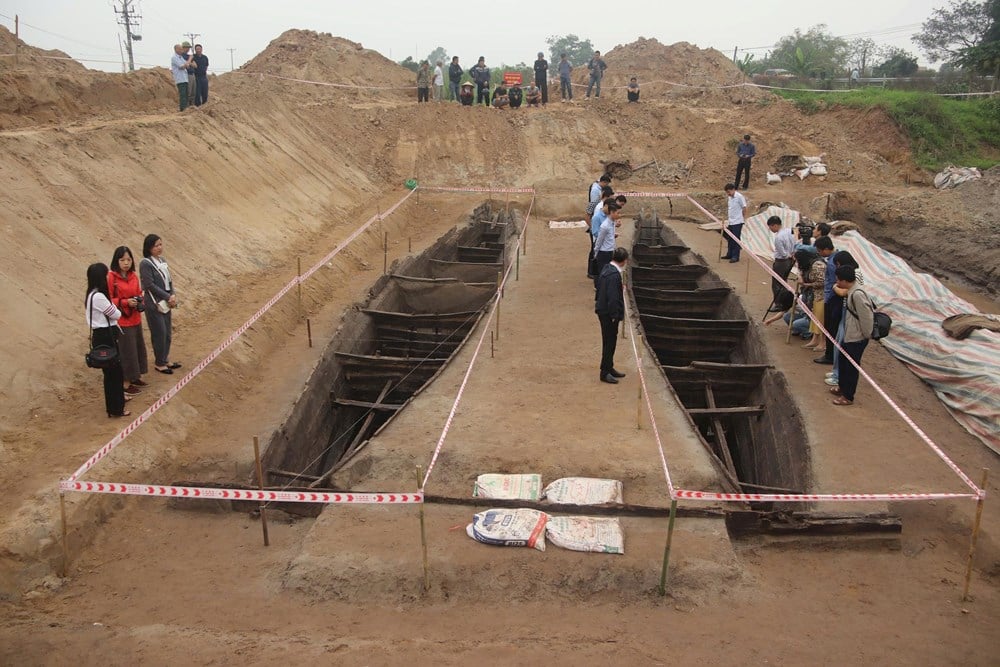
From the structure, accompanying relics, to the results of radiometric dating, the converging evidence shows that this is not only a remarkable discovery but also an important piece of the history of ancient Vietnamese technology, worthy of being preserved according to the national and international vision. Previous assumptions about the ancient boat in Bac Ninh dating back to the Ly - Tran dynasties have been overturned (?).
World- class
According to Van Hoa 's source, the initial carbon dating results (C14) show that the ancient boat of Bac Ninh falls into the late Dong Son period. "Right from the "shore" workshop held at the end of March 2025, I said this is a typical Dong Son technique," Dr. Nguyen Viet, Director of the Southeast Asia Prehistoric Research Center, answered firmly. The key point lies in the technique: Using dugout canoes as the bottom, joining the side planks with mortise and tenon joints, wooden pegs to increase the height and stabilize the boat's body. Dr. Viet emphasized that this is a "world-class" technical tradition at that time, especially because it does not depend on metal but takes advantage of wooden mortise and tenon joints for connection.
The clear traces of mortise and tenon dowels on the wooden body allow for the restoration of the process: The large tree trunk is hollowed out; the edge of the wall is cut to create a shoulder; the side planks are carved along the natural curve, the top and bottom mortise holes are drilled, wooden clamps are placed, and dowels are inserted to fix it. This solution allows the dugout, which is limited in height, to be "upgraded", making it safe enough for the rivers and deltas. Regarding the debate in determining the initial age, Dr. Nguyen Viet noted that errors may arise due to not completely separating organic impurities in the C14 sample, leading to a tendency to "rejuvenate" the results. However, even in the 1,600-1,800 year range, the artifacts are still stable in the late Dong Son, early AD frame. "Here, the new technique is the hard evidence, and C14 is only support," Mr. Viet said.
A special embossed texture
Unlike the dugout canoes used for daily travel, the double-hulled boat in Bac Ninh suggests a unique floating structure with a floor: Two dugout canoes joined in parallel, connected by mortise and tenon crossbars; there are holes on the top and middle of the body for columns, capable of supporting a light roof or a small architectural space. Notably, the two ends are symmetrical instead of distinguishing the bow and rudder, reinforcing the hypothesis that the platform is floating rather than a moving boat.
“I do not call the artifacts in Bac Ninh a boat. I think this is a floating structure, possibly used for rituals, worship, or community activities on the water,” Dr. Nguyen Viet commented. “Through the dugout canoes I have studied, I can confirm that ancient Vietnamese people were clearly aware of aerodynamics in carving the head and tail of the boat. The artifacts in Bac Ninh have the same head and tail. The traces of the boat’s head braces are still quite clear, allowing us to estimate that there were about 8 horizontal bars, 1.2 - 1.5m apart, supporting a flat floor above.” In regional terms, the “double-hulled boat” structure is not common in Southeast Asian documents, making the artifacts in Bac Ninh even more rare and precious.
“This is proof that the Dong Son people understood wood, water, and structure; they solved the problem of stability on the water surface by doubling the dugout and building a functional floor above,” said Dr. Viet. From a historical and technical perspective, the ancient boat of Bac Ninh places the Dong Son culture in the global dialogue about ancient boats: During the Roman period, mortise and tenon joints were also used, but the Dong Son solution appeared early and adapted to the locality; using entirely organic materials (wood, bolts, and pegs) while still achieving durability, showing that the thinking of connecting wood is very developed.
Conservation solutions need an international vision
Dr. Nguyen Viet emphasized, “the two ancient boats do not only belong to Bac Ninh. This is the common property of the country, even of humanity. The perspective on conservation must go beyond administrative boundaries.” From field experience and conservation of ancient boats in Quang Ngai (Tran Dynasty), he proposed two scenarios: First, in-situ conservation: Digging and embanking a waterproof underground lake, isolating the land mass from eroding water sources; controlling pH (currently the area is estimated at pH ~ 4, acidic due to sulfur alum); using moisture-proof and reflective materials (aluminum-faced foam panels...) to stabilize heat and humidity; roofing to avoid rainwater. The stable semi-submerged state helps the wood not shrink or crack when suddenly separated from the old environment.
Second, preservation in the laboratory: Disassemble each wooden panel, number it; neutralize sulfur by soaking, change water periodically for about 6 months, monitor until pH 6-7; then inject PEG (polyethylene glycol) with increasing concentration for about 10 months to replace water in the wood fibers; wrap tightly to dry slowly to a state of mechanical stability, suitable for display. This model was applied by the group of authors, the total cost is estimated at about 98,000 USD for a large boat, with the support of experts from Sweden, Germany, France. "If the locality agrees, international partners are willing to accompany and sponsor, because of the rare value of the artifact," he said.
Dr. Nguyen Viet sent a message that science needs a spirit of comparison and an open vision: “Dong Son boat building techniques have shown the material intelligence and structural thinking of ancient Vietnamese people. The artifacts discovered in Bac Ninh not only supplement chronological data, but more importantly, it requires us to preserve them properly, so that the artifacts can speak to the public today and the world tomorrow.”
Source: https://baovanhoa.vn/van-hoa/bat-ngo-nhung-khong-ngac-nhien-174874.html










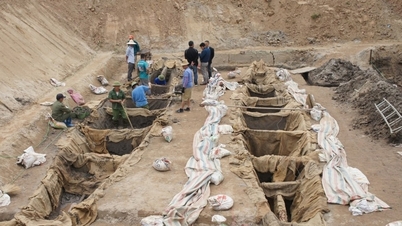



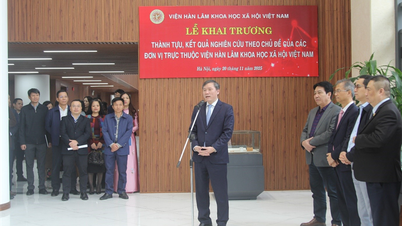



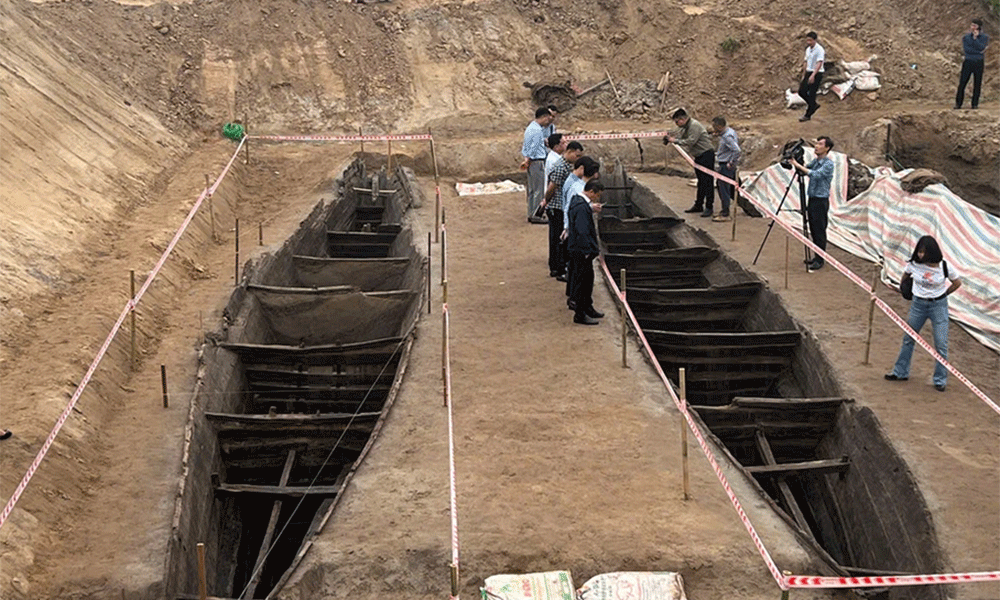









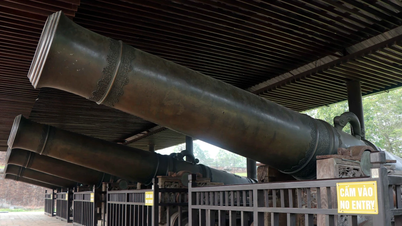




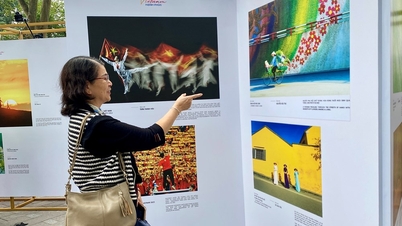




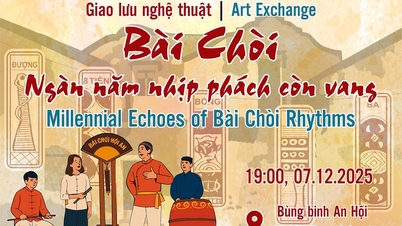
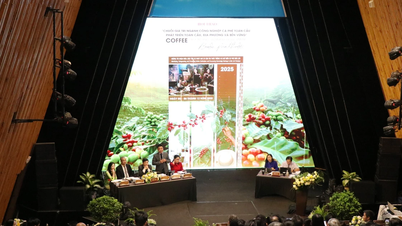
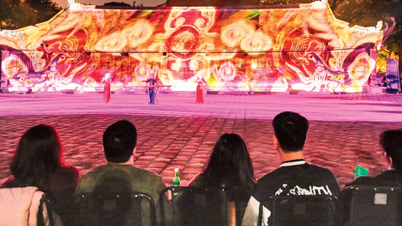

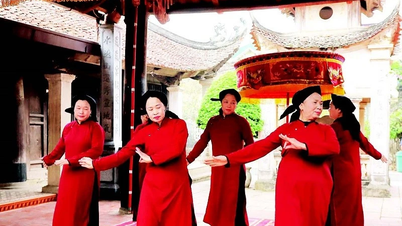
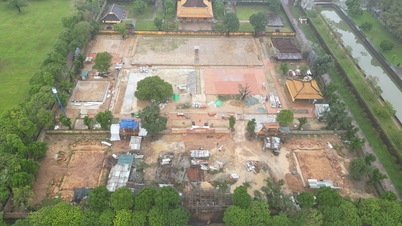
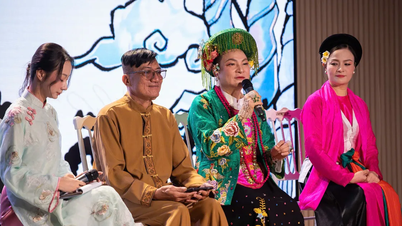




























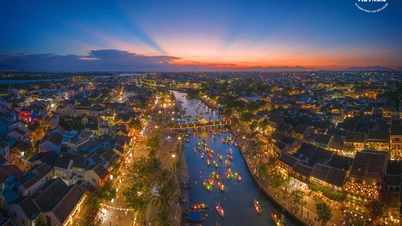



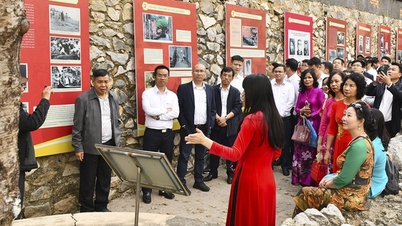





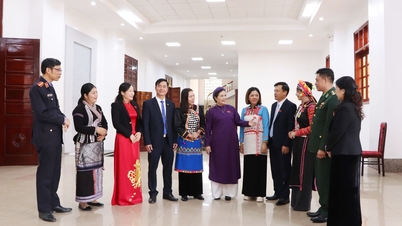


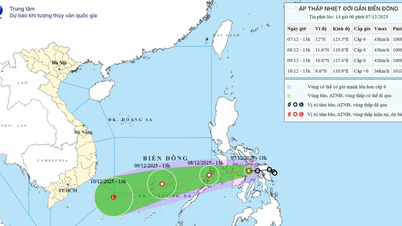






















Comment (0)